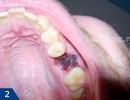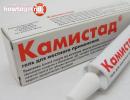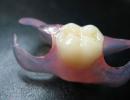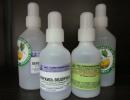Gingivitis in children: treatment, symptoms
From this article you will learn:
- What are gum diseases in children?
- gingivitis in children - symptoms,
- what to do if the child has an inflamed gum.
The article was written by a dentist with more than 15 years of experience.
Gingivitis in children is one of the most common diseases. However, gum disease in children is not limited to gingivitis. Inflammation of the gums in a child can also be observed with periodontitis of one of their teeth (in this case, an abscess or fistula appears on the gum). Also, the phenomena of gingivitis are always present against the background of a child's illness with herpetic stomatitis.
Before starting treatment, it is very important to correctly differentiate gum disease in a child in order to avoid incorrect and thus useless treatment. Below we will consider each of these diseases separately.
1. Gingivitis in children: symptoms, treatment
Gingivitis is an inflammation of the marginal gingiva adjacent to the teeth and interdental papillae (Fig. 1-3). Gingivitis is the very initial phase of inflammation, and if it is not treated, the inflammation will increase, the bone around the tooth may begin to break down, and tooth mobility will also appear.
Gingivitis in children: photo


Gingivitis in children: symptoms
- gum bleeding,
- pain when brushing teeth
- swelling of the marginal gums and interdental papillae,
- redness of the gums - red gums in a child are a symptom of the acute phase of inflammation,
- cyanosis of the gums - a blue gum in a child will be in case of transition of acute inflammation to chronic, with mild symptoms.
An objective examination in the oral cavity reveals accumulations of soft plaque and hard dental deposits, and, as a rule, a large number of carious teeth (site).
Children's gingivitis: causes
So, we answer the question: why do the gums bleed in a child ... The cause of the development of gingivitis is the microbial flora of plaque. Due to poor hygiene, plaque accumulates, the microflora of which actively produces toxins and inflammatory mediators. These toxins and mediators, acting on the gums, cause an intense inflammatory reaction in it, which is manifested by the development of edema, bleeding, etc.
Those. the main factor in the development of gingivitis is soft microbial plaque and dental deposits, i.e. bad hygiene!
Factors contributing to the development of gingivitis
–
in addition to the main factor, there are additional factors that do not themselves cause inflammation, but contribute to its occurrence. ..
 Order a service door lock repair by phone +7 (495) 256-00-73
Order a service door lock repair by phone +7 (495) 256-00-73 




